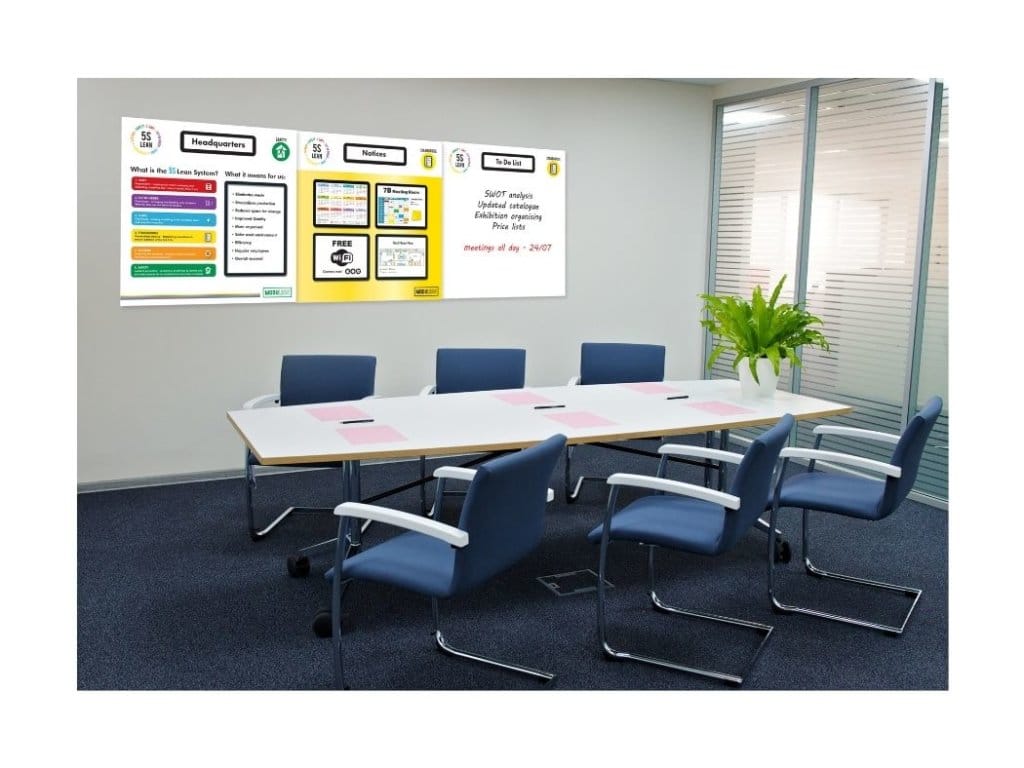Part 4: 5S Standardise – Maintain The System
The fourth step in the 5S methodology is Standardise, or ‘Seiketsu’. This ties in to the standardisation of the first three methodologies in the 5S system that we have already covered – Sort, Set In Order, and Shine.
What does Standardise mean in the 5S methodology?
The aim of this step is to benefit from the continuous practice of the Sort (Seiri), Set In Order (Seiton), and Shine (Seiso) methodologies that precede it across the entire organisation. Se the standard for the workplace.
Just like the first three steps, standardise requires the collective input of all employees to be able to succeed and benefit from the results. Encourage them to create a 5S team management unit to help support the system. The team should consist of leadership from different work areas so that all parts of the company are involved.
Set up a 5S management team to Standardise
The 5S management team should set up meetings to talk about the standardisation process they want to implement, and the responsibilities of staff, and then use this to create a list of company standards. Leaders and employees from the different areas within the workplace should then be given the opportunity to evaluate and authorise the standards. Once sanctioned, the standards and practises should be applied to the entire workplace.
New standards and best practises should be shared with all your employees and be positioned in designated areas around the workplace. A great way to convey these new standards is through visuals, such as signage or Vis-Com boards.
Vis-Com boards display 5S information neatly and proficiently, and make it simple for employees to familiarise themselves with the new standards and best practices. In conjunction with this, training employees on best practises should also be included on any changes to the system.
Finally, the 5S standards must be preserved, maintain best practices and reviewed regularly. When suitable, schedule meetings with all the hierarchies within the workplace to review the 5S system. In addition to this, because the Standardise step is an amalgamation of the first three steps in the 5S methodology, each prior step should also be evaluated individually. This will give a full understanding of the standardisation needs.

Vis-Com boards are a great way of displaying the full 5S system and visually familiarising your staff with standardisation
Benefits of the Standardise step
Here are some of the benefits of the Standardise process from the 5S methodology:
- Uniformity across all areas of the workplace
- Guarantees that the workplace continuously reaps the benefits of the three Sort, Set In Order and Shine steps
- Improves staff morale and productivity. Employee input is always considered during the process of 5S standardisation. This process shows that the company values and respects the opinions of their employees
- Promotes accountability. Responsibilities are distinctly outlined. Employees know and understand what is expected of them
- Encourages consistency. In the 5S methodology, processes are designed to improve productivity and efficiency. If the system is altered to achieve these goals, then the standards should be altered as well. The Standardise step is never a still process, it must be flexible and evolve along with to the other three steps before it
Read Part 3: 5S Shine

